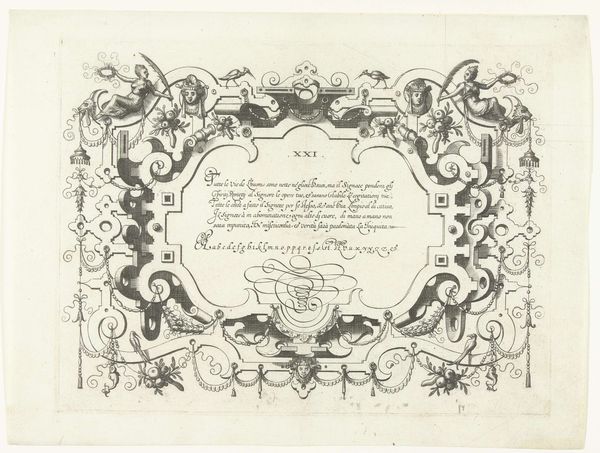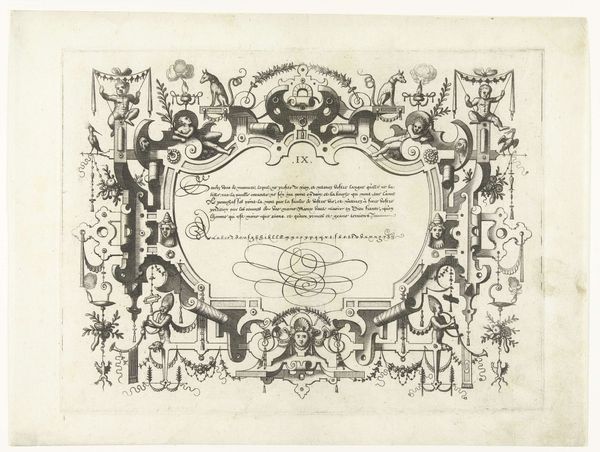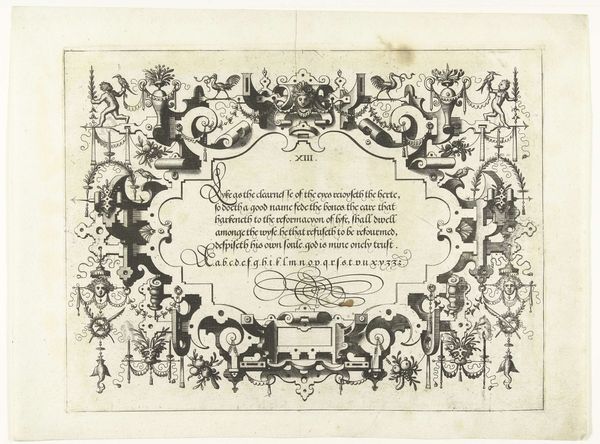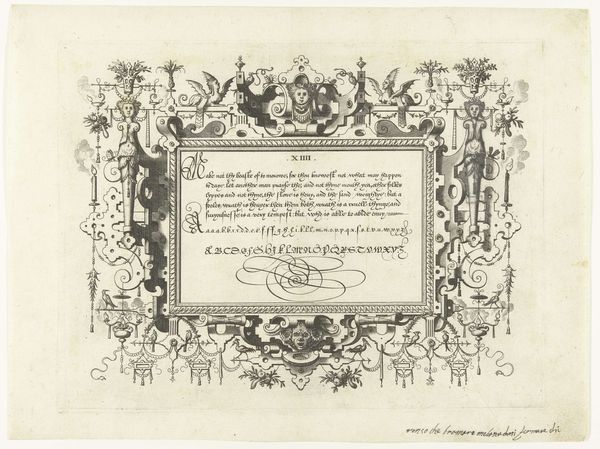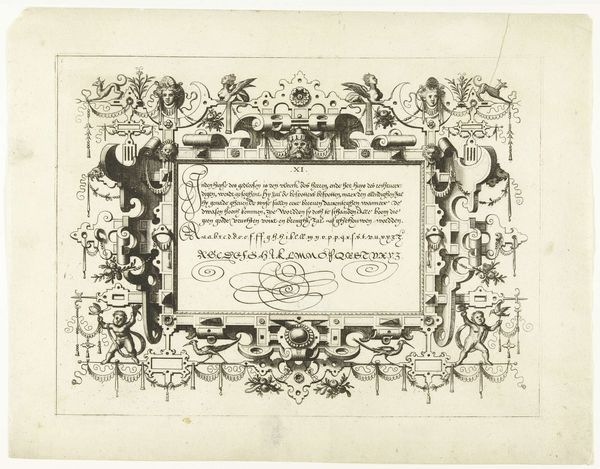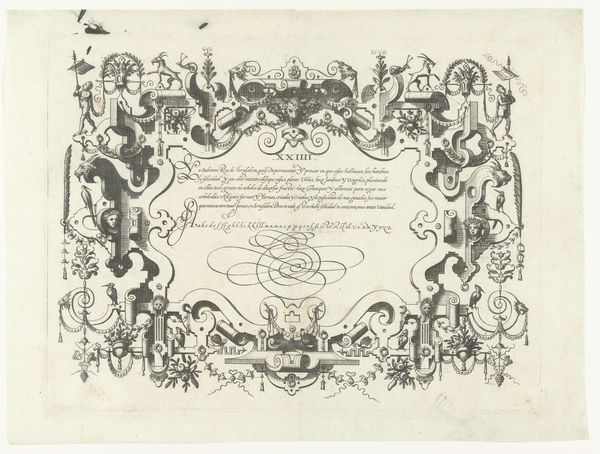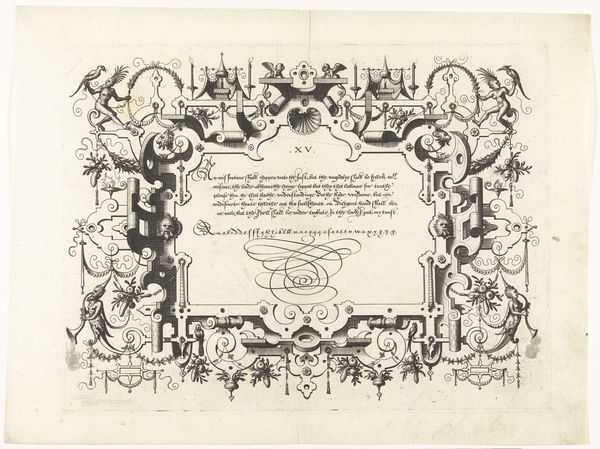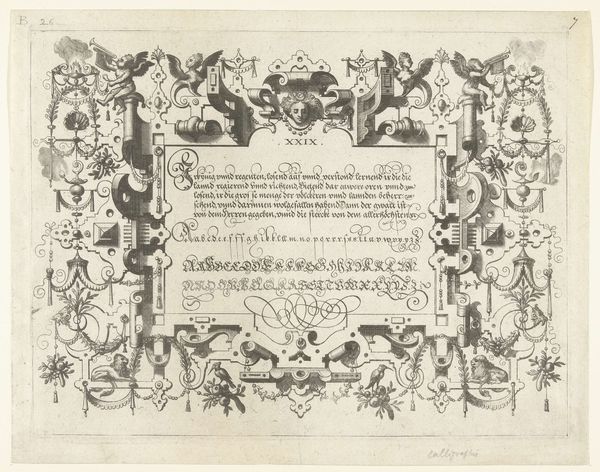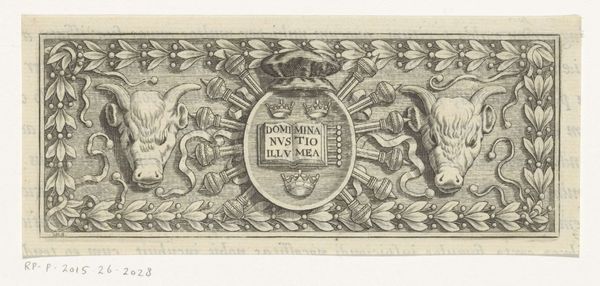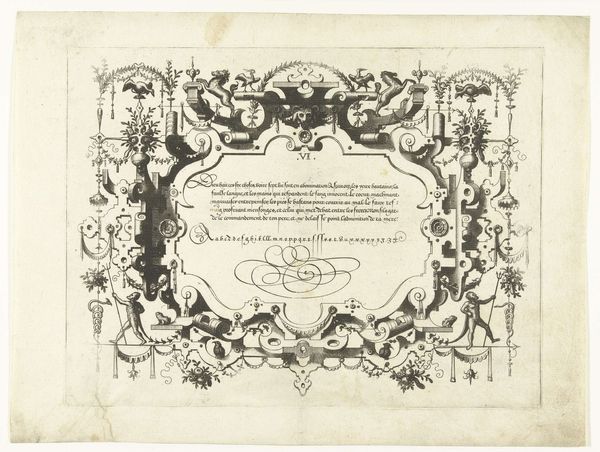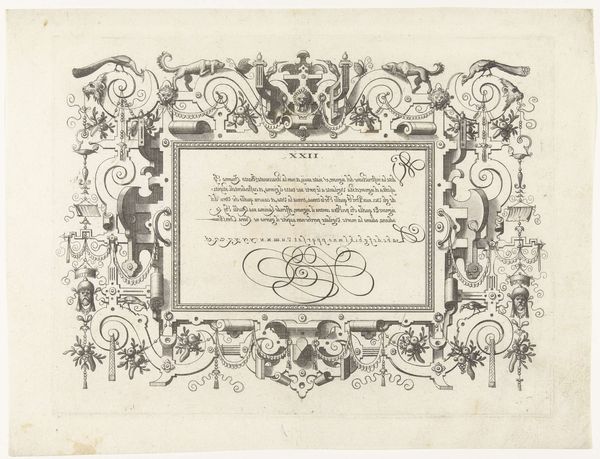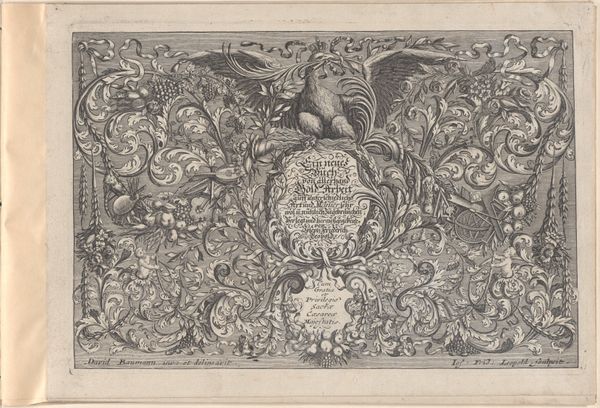
Titelprent met titel in cartouche met daaromheen apen aan het werk als goudsmid 1594
0:00
0:00
print, engraving
#
allegory
#
baroque
# print
#
figuration
#
engraving
Dimensions: height 83 mm, width 123 mm
Copyright: Rijks Museum: Open Domain
Curator: This engraving, dating from 1594, is by Nicolaes de Bruyn and it's called "Titelprent met titel in cartouche met daaromheen apen aan het werk als goudsmid"—a title page with the title in cartouche, surrounded by monkeys working as goldsmiths. Editor: My initial impression is one of playful craftsmanship, of organized chaos. The frame teems with activity and life while simultaneously feeling quite controlled by its detailed execution. Curator: Notice how De Bruyn intricately details the apelike figures in their roles—laboring at a craft heavily reliant on materiality. These are not simply decorations; they actively engage with the tools and products of goldsmithing. The labor is central. Editor: The presence of monkeys, mimicking human craftsmanship, offers rich symbolism. It evokes the idea of imitation, skill, and perhaps even satire about human vanity. These monkeys could also symbolize alchemy and transformation. Curator: Absolutely, the inclusion of animals calls to mind the bestiaries and emblem books popular at the time. It reminds me that even “high art” is often made through skilled labor, like goldsmithing which relies on specialized training, not divine inspiration. Editor: It also recalls earlier iconographic traditions in religious art, but flipped—instead of saintly figures performing divine acts, we have monkeys enacting earthly trades. Is this meant to mock religious iconography? Or simply to elevate the craft of goldsmithing to a higher status? Curator: It's challenging to determine De Bruyn's precise intent. But by focusing on the monkeys' active roles, we recognize how it connects visual representation, knowledge transfer and specialized workshops—crucial aspects to acknowledge during this period. Editor: The frame itself becomes part of the narrative. Every curve, flourish, and cherubic face surrounding the text plays a crucial role in establishing mood, adding a decorative element which at the same time has a specific, recognizable iconographic message. Curator: I’m fascinated by the combination of text, animal figures and the tools depicted in relation to late 16th-century artistic practices. They’re not separate entities, but rather integral parts to acknowledge workshop productions. Editor: Thinking about how visual symbols communicate deeper meanings has altered how I appreciate De Bruyn’s engraving, and it also prompted me to delve further into Renaissance and Baroque uses of animal figures in cultural commentary.
Comments
No comments
Be the first to comment and join the conversation on the ultimate creative platform.
